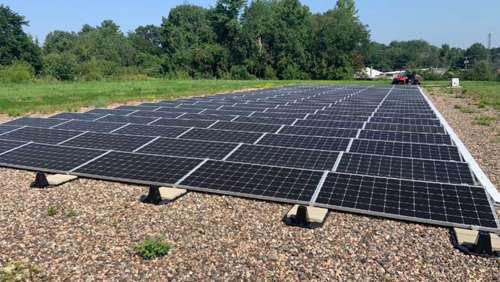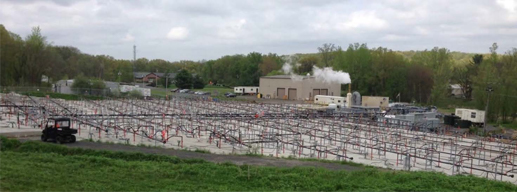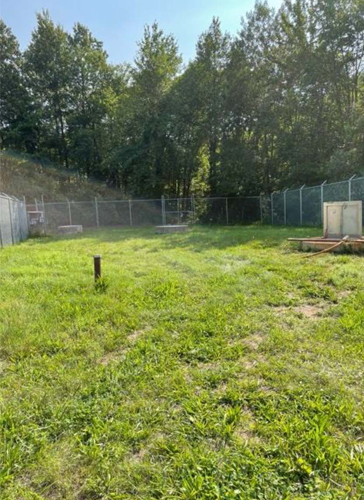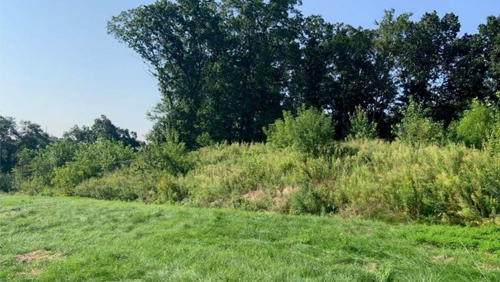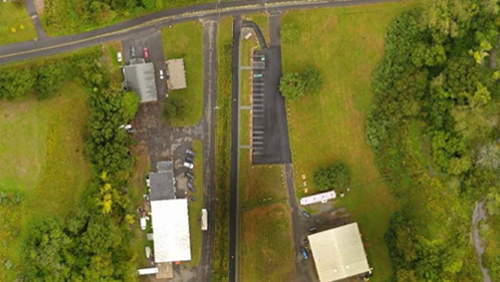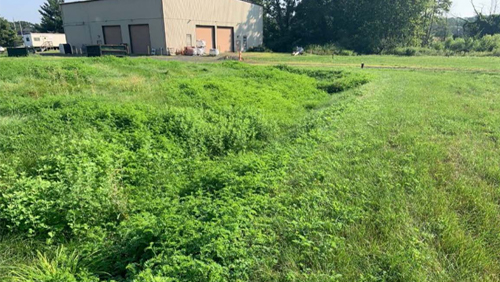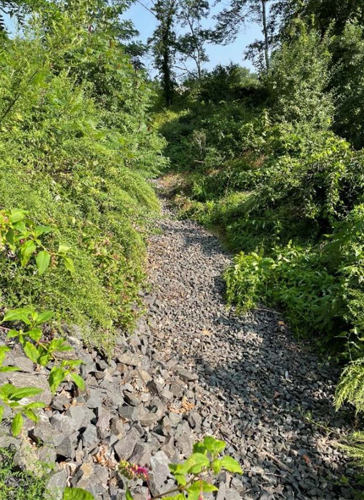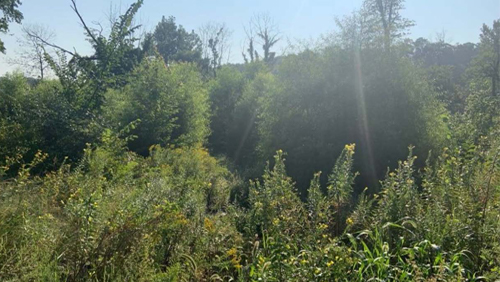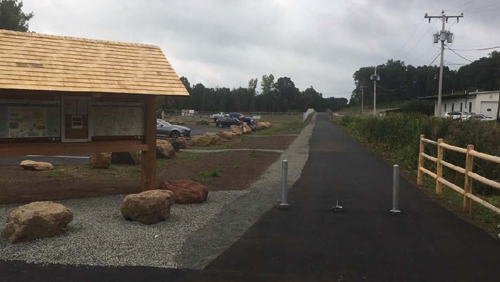Green Remediation Focus
Solvents Recovery Service of New England, Inc. Superfund Site
Southington, Connecticut
Superfund NPL
Cleanup Objectives: Remediate soil, sediment and groundwater contaminated by past use of this 42-acre site for reprocessing and reclaiming spent solvents and petroleum fuels. Contaminants include volatile organic compounds (VOCs), dense non-aqueous phase liquid and per- and polyfluoroalkyl substances (PFAS). Remedial actions have involved removing waste drums, conducting in situ thermal remediation (ISTR) to address soil contaminants, operating a groundwater pump-and-treat (P&T) system to prevent contaminant migration, and consolidating and capping contaminated soil, wetland soil and river sediment. The site borders the Quinnipiac River, which flows to Long Island Sound.
Green Remediation Strategy: The strategy focused on designing and constructing remedies with site reuse considerations to maximize long-term efficiencies of using material, energy and other natural resources. Primary best management practices (BMPs) integrated into the remedy design and construction included:
- Use onsite sources of renewable energy to power remediation equipment or offset the use of grid-supplied power for remediation purposes.
- Integrate green infrastructure elements as a nature-based approach to retaining or diverting stormwater.
- Develop a site restoration plan that uses a suitable mix of non-invasive native trees, shrubs, grasses and forbs to preserve or improve biodiversity and related ecosystem services and minimize long-term maintenance of vegetation.
Results:
- Reduced the areal footprint of contaminated soil and sediment capping and associated cap maintenance by excavating and consolidating the material in a single area rather than multiple smaller areas. This remedy modification also facilitated reuse of the capped area. While the majority of the 2.9-acre multilayer cap's surface consists of a vegetated layer, approximately 525 linear feet of the cap surface was paved instead of seeded for recreational purposes and a 65- by 260-foot area was topped with 6 inches of crushed stone instead of seeded to provide a base for renewable energy equipment.
- Avoided use of an average of 70,890 kilowatt-hours of grid electricity each year through the operation of a 53 kilowatt photovoltaic (PV) array installed above the consolidated soil/sediment cap and connected to the utility grid. The solar energy system directly supplies power to operate the groundwater extraction pumps as well as the groundwater treatment building. Excess power generated by the PV array is fed to the utility grid for electricity purchase credits, which are applied on cloudy days when the solar array cannot meet the full energy demand and grid-supplied electricity is therefore required to continue operations at the required rate.
- Eliminated the onsite environmental footprint of treating the extracted groundwater by transitioning to offsite treatment of the groundwater after 10 years of P&T operations involving metals pretreatment, filtration, ultraviolet oxidation and granular activated carbon adsorption. A review of the influent data concluded that contaminant concentrations in the groundwater had been reduced to levels below the state and local thresholds for permitted discharge to the publicly owned treatment works. Groundwater continues to be extracted from a series of four extraction wells extending to the overburden aquifer or bedrock aquifer but is now discharged to the town of Southington sanitary sewer. Suspending onsite treatment of the extracted groundwater is estimated to annually save approximately $400,000.
- Created a 10-foot wide pedestrian and bicycle path made of asphalt to facilitate reuse of a former railroad right-of-way crossing the completed onsite cap. Companies performing the cleanup collaborated with the U.S. Environmental Protection Agency, Connecticut Department of Energy and Environmental Protection (DEEP) and town of Southington to connect the path with the regional Farmington Canal Heritage Trail.
- Reduced stormwater runoff by approximately 5% when compared to pre-remediation site conditions by converting impervious surfaces to vegetated surfaces. Additional runoff is retained for onsite infiltration via vegetated swales installed along the cap perimeter and the paved recreational path. Also, a level spreader and vegetated filter strip installed on the downgradient side of an onsite parking lot filters the parking lot runoff and prevents associated erosion.
- Gained approximately 1,600 cubic feet of sitewide flood storage capacity by leaving an excavation unfilled and thus provide an infiltration gallery. The excavated area had provided grading material for remedy construction.
- Restored target plant species to enhance biodiversity and provide habitat for wildlife. As part of soil/sediment cap construction, approximately 600 native wetland trees and shrubs were installed in remediated wetlands and approximately 2,100 native trees and shrubs were installed in disturbed upland areas. Four years after the plantings, survival rates of the planted target trees and shrubs were estimated at approximately 70% and 80%, respectfully. Additional shrubs may be planted in the future to achieve additonal habitat restoration. This effort is part of a habitat restoration project undertaken by the U.S. Fish and Wildlife Service and Connecticut DEEP. Co-benefits are anticipated to include alleviation of flooding along banks of the Quinnipiac River.
Property End Use: Open space
Point of Contact: Kevin Heine, U.S. Environmental Protection Agency Region 1; and Shannon Pociu, Connecticut Department of Energy and Environmental Protection
Update: September 2021





